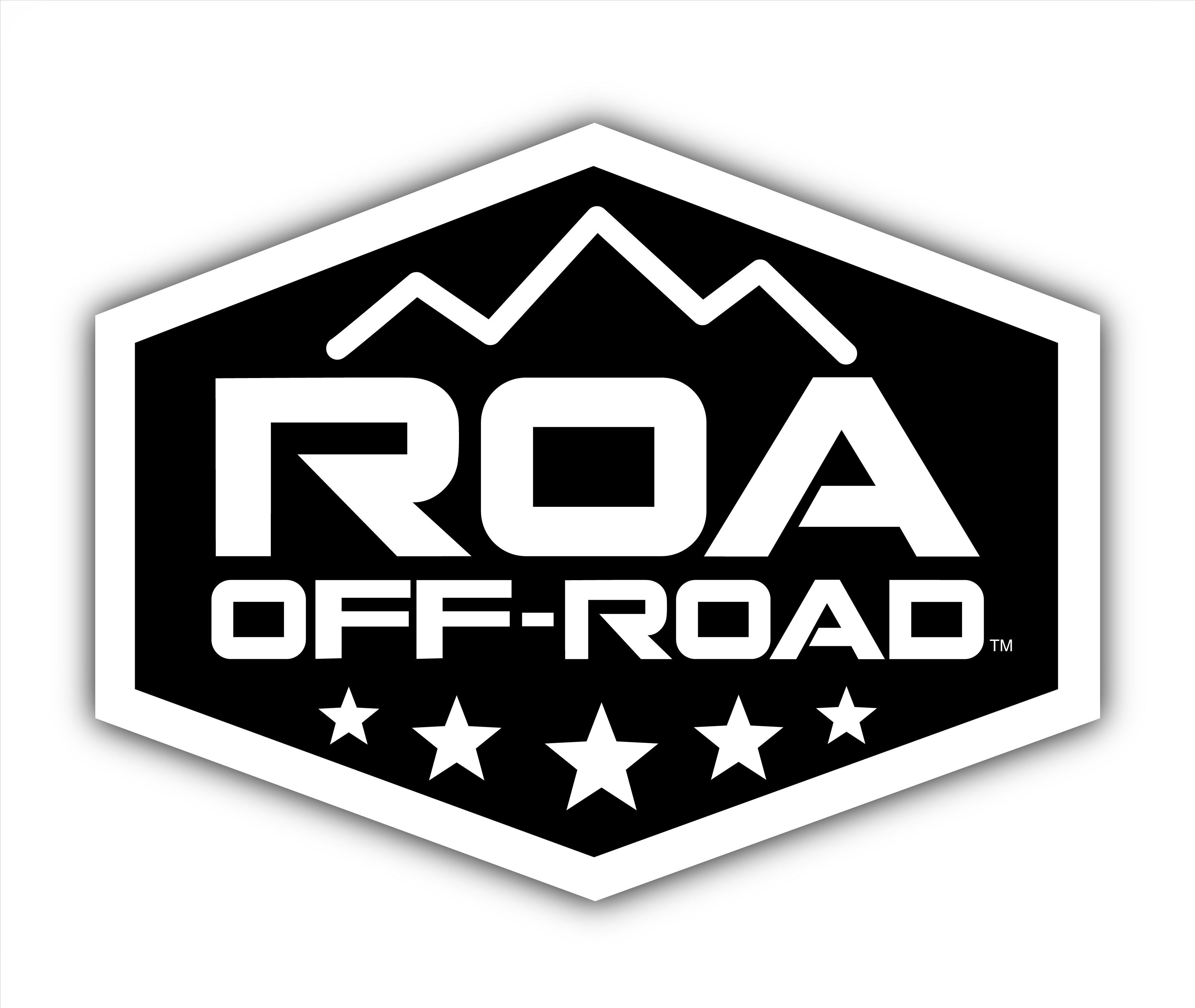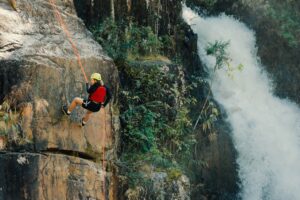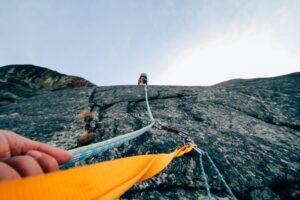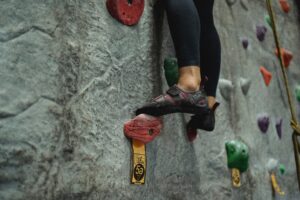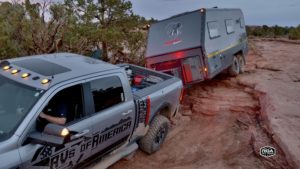Rock Climbing Basics
Welcome to an entirely new world of thrilling, adrenaline pumping action; welcome to rock climbing. I am going to introduce you to the basic types of climbing and the equipment you need to get started. There are many different types of rock climbing. Trad Climbing, sport climbing, top-rope climbing and bouldering are all on the list for today.
The 4 Types
Trad Climbing
This is not for beginners. This type of climbing involves the climber placing all of the necessary protection in the rock while he is ascending it. What I mean by protection is mainly camming devices. These crafty mechanisms lock into small cracks in the rock and are connected to the climbers rope/harness.
The climber relies on these anchors to catch them if they happen to lose their grip and fall. This type of climbing requires a great deal of experience and technical knowledge to be done safely. There is a lot more diversity in this form because the routes change depending on what type of gear you have available.
Sport Climbing
This is the type of climbing you probably think of most when you think of rock climbing. The climber doesn’t need as much gear as trad climbing, because the protection is already bolted in place. The main focus of sport climbing is to tackle difficult routes without having to figure out where to secure the anchors. Subsequently, this cuts down on the time it takes to finish the climb. A nice thing about Sport climbing is that it’s more accessible to beginners, since they don’t have to have quite so much of their own gear.
Top-Rope Climbing
This is one of the safest and most popular forms of climbing. Top-rope climbing is where the climbing rope is always anchored above you, so if you fall you only fall a few feet as opposed to ten to fifteen foot falls in other types of climbing. This is the kind of climbing you will see if you go to a climbing gym. It is a great way to learn the basics of safety while climbing. Advanced climbers can use this type of climbing to focus on technique, strength building, and endurance.
Bouldering
this type is quite a bit different from the others and my personal favorite. In this style of climbing the climber doesn’t use a harness or rope for protection from falling because the routes are typically below 25ft in height. A thick cushion called a crash pad is placed underneath the climber so they aren’t injured when they fall. Bouldering is an extreme form of climbing in which the climber must combine power with technique to conquer difficult routes. Routes in bouldering are commonly referred to as “problems.” Since the problems aren’t as long as a route in other styles of climbing the individual moves tend to be much more difficult and demanding.
What You Will Need To Get Started
Shoes
Now that you are familiar with the styles of climbing there are a few things you will need before you can hit the rock. First, and in my opinion most importantly, you will need climbing shoes. They are an essential element in any climber’s game. They allow you to support your body on the tiniest of cracks. I would advise you against purchasing shoes online. Do not buy climbing shoes without trying them on and making sure they fit your foot. Without shoes that work with your foot you will have a miserable climbing experience. There are quite a few different brands of shoes out there. I recommend La Sportiva, 5.10, and Scarpa. Find one that fits your foot and you will be good to go.
A Harness
Find a quality harness that fits you great or you will regret it in the morning, and possibly during the climb too. Harnesses usually range from around 60 to 140 dollars. Black Diamond, Arcteryx, and Petzl all make good harnesses. Having a chalk bag is very important but not required. Chalk prevents your hands from sweating. Trust me when I say you do not want to climb with sweaty hands. Chalk bags and chalk are pretty inexpensive, starting at around 20 bucks.
Rope
These three things are all you would need if you are climbing at a gym. On the other hand, if you are going outdoors there are a couple more things. Rope is the obvious one. Climbing in a gym is nice because they have all the ropes set up on top-rope for you. Outdoor climbing is a whole different game. You should buy rope that is at least 60 meters long but preferably 70 meters. Rope can range from around 100 to 300 dollars.
Trad Climbing Specific
Quickdraws are vital for trad climbing. Quickdraws are comprised of two locking carabiners connected with a strong flat rope. One carabiner hooks into the bolt in the rock and the other is used to loop the rope through. These sell for about 12-15 dollars apiece, and you should have around 10. Trad gear consists of cams, carabiners, and nut tools.
Bouldering specific
These can get relatively expensive. Crash pads are only needed if you are going to be bouldering, and you should definitely go bouldering. Crash pads start at 150$ and nice ones can get up to 400$.
In The End
I know it seems like there is a lot of material needed for climbing and maybe there is, but the good thing is that once you take the hit and buy all the equipment you’re done. It’s pretty much a one time deal and you can have a blast climbing for years and years.
So, there you have it! All the basics to the styles and equipment you need to start climbing! Once you get out there on the rock you will never go back, I promise.
Something A Little Extra
When you are out there rock climbing it is a drag to have to come home right after, particularly if the places you go are far away. That’s why you need a base camp. A place where you can stay overnight and then get back to there the next day. What you need is a home away from home. What you need is an off road camper! Check these out: https://www.rvsofamerica.com/inventory/?swoof=1&product_cat=in-stock
And here are some awesome off road videos: https://www.youtube.com/@ROAOffRoad
